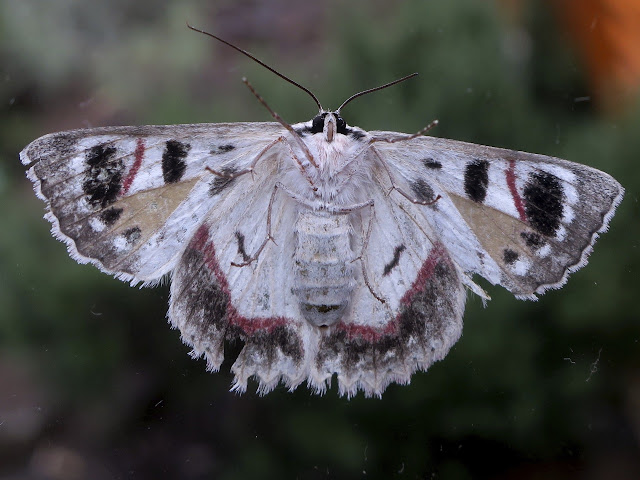Four weeks ago I had an early morning walk around the Royal Botanic Gardens Melbourne. It was the first opportunity to visit the Gardens since the beginning of the second lockdown in July.
The morning air was still, with bright sunshine.
Two of my students have recently sent me photos of exercises I had set them to do while in lockdown.
Now for a little mystery abstract art.
Or a close up of an unexpected visitor at the window?
Also in the garden...
...the Strelitzia reginae has started to flower. This year it has produced five flowers and last week I was particularly drawn to the intense indigo blue of the petals.
The plant is still young and I have brought it into the garden particularly for its leaves, which have a red rib for a while when they first open. The other Strelitzia in the garden with similar looking flowers is S. juncea. It has tiny leaf margins at the tip of its spear like leaf stems. I did not want to deprive the new plant of any of its few leaves so I have used some New Zealand flax leaves in today's ikebana.
On Thursday I invited my local students to celebrate the end of 2020 at our house. It was particularly satisfying for us all to gather after the long lockdown (112 days), having had no face-to-face classes since Term one. Thank goodness for social media and email that enabled us all to maintain contact.
My ikebana was made for this celebration, the morning and afternoon tea for my two local classes. My ikebana meets the criteria for the Sogetsu curriculum exercise of 'Showing the lines at the base'. In this exercise the lines need to arise cleanly from the vessel and the focal point should be high in the arrangement. I felt the mass of lines on the left side looked a little heavy so added a single line on the right creating a space that made the work lighter. The shino-glazed suiban is by Elena Renker from New Zealand.
Greetings from Christopher
5th December 2020













I have always loved cactus, and use to grow them when I was a teenager, so enjoyed seeing the photos of the Arid Garden.
ReplyDeleteI really like your arrangement with the strelitzia and flax, plus the colors and earthy look of that lovely container works so well with the materials you chose.